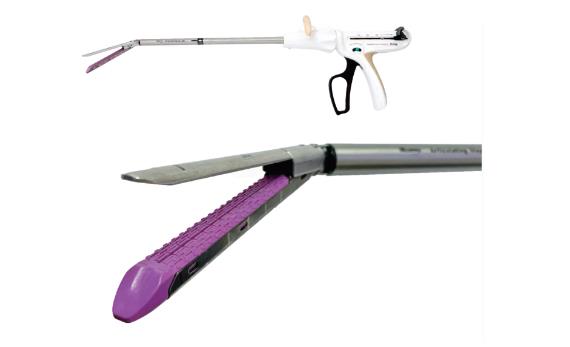what are surgical stapling devices
Surgical suturing devices are important tools used in the medical field to hold body tissues together during surgery to promote wound healing. This type of device has undergone years of development and innovation, and now includes a variety of types to adapt to different surgical scenarios and patient needs. According to the scope of application, it can be mainly divided into skin staplers, digestive tract (esophagus, gastrointestinal, etc.) circular staplers, rectal staplers, circular hemorrhoid staplers, circumcision staplers, vascular staplers, hernia staplers, lung cutting staplers, etc.

1. Classification of surgical staplers
Surgical suturing devices mainly refer to those medical devices that can assist or automatically complete wound suturing. Generally divided into disposable or multiple-use staplers, surgical suturing devices can be divided into the following categories according to their functions and operation methods:
Traditional suturing tools: including sutures and suture needles, which are the most basic suturing devices. Doctors use special surgical needles to pass sutures through tissues to align and close the edges of the wound.
Suture glue: also known as tissue adhesive or medical glue, it is a special glue used to bond the edges of the wound together to promote healing. This method is usually used for shallow wounds.
Staples: A metal nail used to fix the edges of tissues, often used in the treatment of fractures because the staples provide additional stability and support.
Suture tape: A soft medical tape used to hold the edges of the wound tightly together. It is suitable for smaller incisions or cuts, and can also assist the use of traditional sutures or suture glue.
Stapler: A mechanical device that automatically applies sutures or staples to the wound. This device is usually used for longer incisions or situations where rapid suturing is required.
Intracavitary suturing device: A device designed for precise suturing in narrow spaces inside the human body, such as the suturing device used in laparoscopic surgery, which can significantly reduce surgical trauma and accelerate patient recovery.
2. Functions and characteristics of modern staplers
Accuracy: Modern surgical suturing devices, especially automated and semi-automated devices, can ensure the accuracy of suturing and reduce human errors.
Efficiency: The use of suturing devices can significantly improve surgical efficiency and shorten surgical time, thereby reducing patient pain and reducing surgical risks.
Reduce trauma: Compared with traditional manual suturing, modern suturing technologies such as intracavitary suturing devices can significantly reduce surgical trauma and promote postoperative recovery.
Wide applicability: Different types of suturing devices are suitable for wounds of different types, sizes and locations, providing doctors with more choices.
3. Precautions for use
Choose a suitable suturing device: The doctor should choose a suitable suturing device according to the specific conditions of the wound, the patient's health status and the surgical goal.
Strict operating specifications: When using a suturing device, the doctor should strictly abide by the operating specifications to ensure the accuracy and safety of the suturing.
Postoperative care: No matter which suturing device is used, the wound should be well cared for after surgery to avoid complications such as infection.
Medical stapler equipment has now become an indispensable surgical instrument in hospitals. Their development and innovation provide more options and better suturing effects for surgical treatment.
